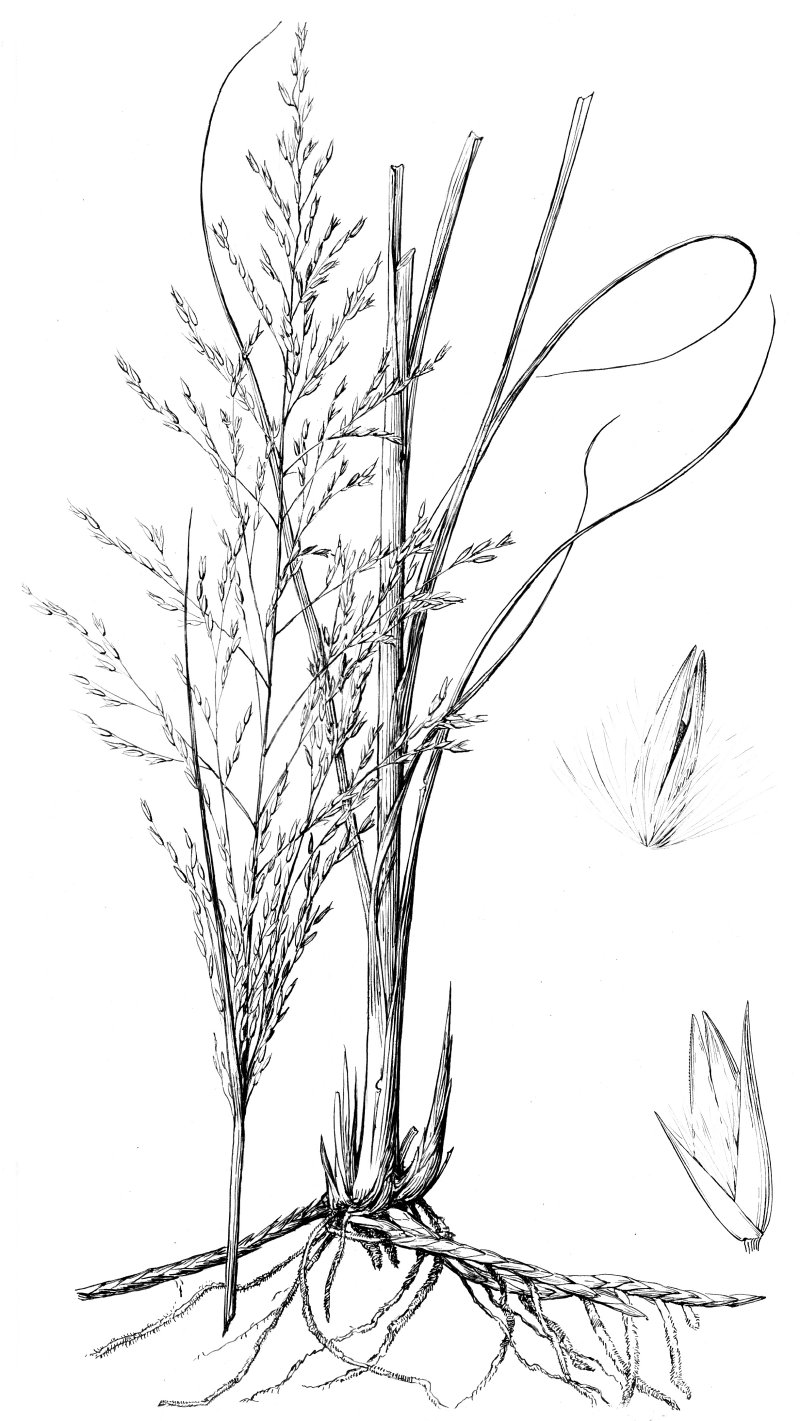
Calamovilfa longifolia (Hook) Prairie Sandreed Habit: Tall perennial, with long, strong, scaly, sharp-pointed rhizomes. Culms: Mostly solitary, 50-180 cm. tall, stout, smooth. Blades: Elongated narrow stiff, flat or more or less involute, 4-8 mm. wide near the base, tapering to a long, fine point, slightly rough above. Sheaths: Crowded, overlapping, usually hairy, especially near the summit and on the margins. Ligule: A dense ring of hairs 1-2 mm. long. Inflorescence: Narrow loosely spreading pale panicles, 15-35 cm. long, the slender smooth branches erect or ascending, the lower 10-12 cm. long. Spikelets: Pale, 5-7 mm. long, flattened, 1-flowered, crowded, the rachilla disarticulating above the glumes, not prolonged behind the palea, awnless, callus densely bearded. Glumes: Acuminate, persistent, rigid, papery, awnless, keeled, 1-nerved, 6-8 mm. long, the first shorter than the second, the second equal to or exceeding the floret, callus-hairs about half the length of the smooth lemma and palea. Lemmas: 1-nerved, acute, about as long or somewhat shorter than the second glume, glabrous, with a ring of long hairs at the base, enclosing a 2-keeled palea and a perfect flower. Palea: About as long as the lemma, broad, deeply furrowed between the strong nerves, glabrous. Habitat: Sand hills and prairies. June-September. Kansas Range: Jewell to Shawnee, Cheyenne and Comanche counties. Use: An excellent sand binding grass, coarse forage. Synonyms: Calamovilfa longifolia (Hook.) Scribn. var. longifolia